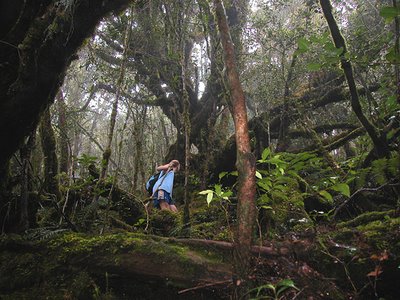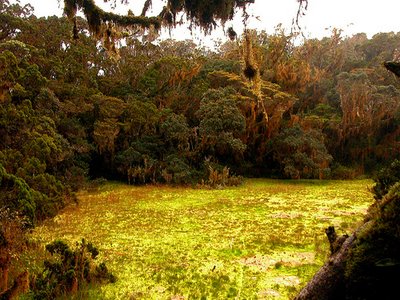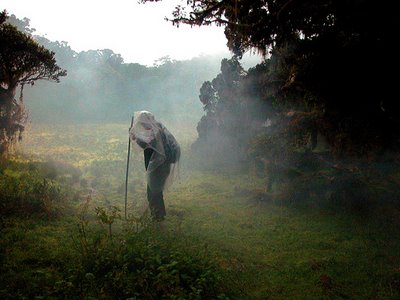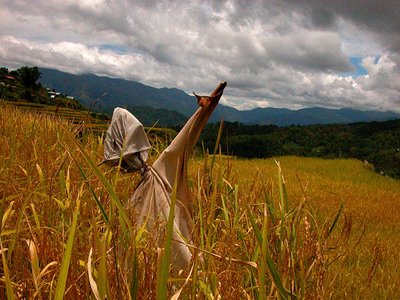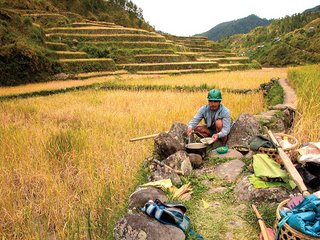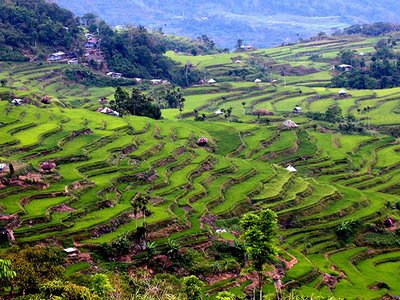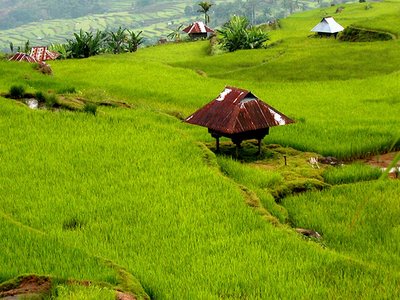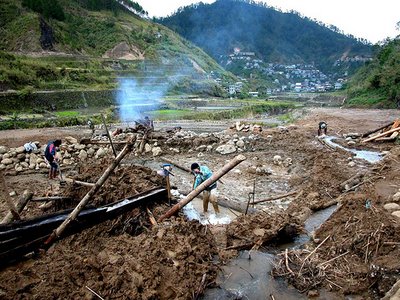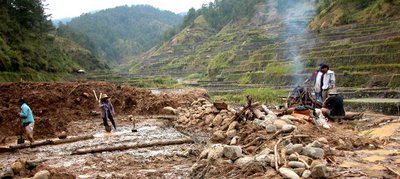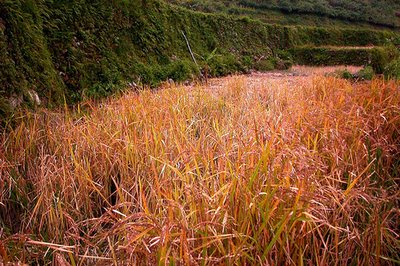One of the remarkable music in the Mountain Province or among the Igorot tribes are their Indigenous chants which are sung in different occasions like praying for the dead, wishes for a newly wed, entertainment on gatherings, songs in the ricefields, etc. Each differ in melody and tunes according to the nature of the occasion, tribes or even villages in a tribe- they can be different the way they are delivered. For example the Bontoc and those of Barlig chants are different, apart from the dialects. Here in these two videos the Bontoc women singing are standing, and do a lot of swaying of legs and body that goes with their chants. I am not sure how the Bontoc calls their chant in it's Finontok word but it is quite charming and more cheerful it seems. This is probably depending too on the nature of the life or death of the person being on vigil. You see a lot of laughter and cheer in these recordings maybe because my great grandmother lived a century and had a good life and died a natural death.
I haven't seen any research yet on the varieties and details about these chants of the igorot. Infact, Albert Jenks said in his book The Bontoc Igorot " The Igorot has vocal music, but in no way can I describe it—to say nothing of writing it. I tried repeatedly to write the words of the songs, but failed even in that. The chief cause of failure is that the words must be sung—even the singers failed to repeat the songs word after word as they repeat the words of their ordinary speech. There are accents, rests, lengthened sounds, sounds suddenly cut short—in fact, all sorts of vocal gymnastics that clearly defeated any effort to “talk” the songs."
These tradition is dying now a days, many of the skilled elders died and the generations hasn't acquired them. The new generations now just sings the hymnals from the church, or other composed songs.
I haven't seen any research yet on the varieties and details about these chants of the igorot. Infact, Albert Jenks said in his book The Bontoc Igorot " The Igorot has vocal music, but in no way can I describe it—to say nothing of writing it. I tried repeatedly to write the words of the songs, but failed even in that. The chief cause of failure is that the words must be sung—even the singers failed to repeat the songs word after word as they repeat the words of their ordinary speech. There are accents, rests, lengthened sounds, sounds suddenly cut short—in fact, all sorts of vocal gymnastics that clearly defeated any effort to “talk” the songs."
These tradition is dying now a days, many of the skilled elders died and the generations hasn't acquired them. The new generations now just sings the hymnals from the church, or other composed songs.
Bontoc Chant: Part 1:
Bontoc Chant: Part 2:











